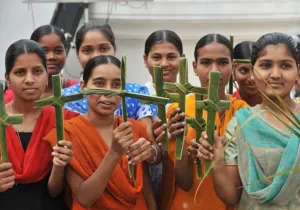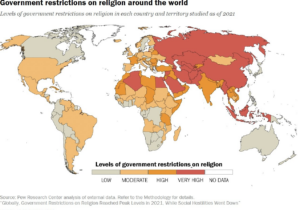The Ethiopian Orthodox Tewahedo Church is an ancient church with a rich and unique history. It is one of the six “Oriental” churches, which also include the Ethiopian, Eritrean, Coptic, Armenian, Indian, and Syrian Orthodox Churches. These churches share a liturgical and apostolic tradition and endured a great deal of persecution to survive. They still suffer intimidation and violence, and their members are often targets of violence during political unrest in the Middle East and Africa.
The Ethiopian Orthodox Tewahedo Church has a history that dates back to the first century, and the country was one of the first places where Christianity was preached. Ethiopians worshiped the Lord God according to the Judaic faith for about a thousand years before the introduction of Christianity in Ethiopia, and there are still signs of Judaic worship at different places in the country. Some of the disciples and the Ethiopian eunuch, who was in charge of the treasures of the queen and who was baptized by Philip the Apostle in the Jordan River, were among the first disciples for Ethiopian Christians. Christianity became a state religion in the fourth century after the twin brothers Abraha and Atsbeha, kings of the Axumite kingdom, accepted Christianity.
Since that time Ethiopia has been a safe haven for the oppressed regardless of their race or religion. Not only did Ethiopians welcome the “Nine Saints,” who came from Syria in the sixth century, but they also became the most influential saints. Most of the monasteries that they established are still centers of theological and pastoral education. The Muslim prophet Mohammed knew of Ethiopians’ hospitality and sent his family to this Christian nation, seeking a safe haven for them. The Christian king of Ethiopia gave them refuge and refused to turn them over to those who were after Mohamed and his family. So Ethiopia was a place where many were able to find solace for many centuries.
Nonetheless, different extremist groups throughout the centuries have targeted Ethiopian Christians. Around the ninth century, a rebellious woman named Judith led 40 years of destruction against the church. In the early sixteenth century, an Islamic jihadist known as Ahmed the gragn (the left-handed) destroyed many churches and manuscripts and killed many Christians, including clergy, women, and children. Despite many attempts of destruction against the church, believers preserved the faith. While Christianity has almost been eliminated in most of the ancient Christian countries, it remained a state religion in Ethiopia until the fall of the last emperor, Haile Selassie, in 1972. Today Ethiopia has the second-largest number of Orthodox Christians among the Orthodox world. Even though Christians in many parts of Ethiopia throughout its history have been subject to murder, torture, and forced conversion to Islam, they learned to live in peace with Muslims and others for many centuries. But there have been more coordinated attacks against the church in the last 20 years.
In March 2011, at least 50 churches were burned, and 3,000 Christians were displaced in a region less than 200 miles west of Addis Ababa. In the last few years, more Christians have been persecuted or killed. Many are being displaced from their homes and the land that has welcomed newcomers for centuries. More churches have been burned and properties of Orthodox Christians destroyed at an alarming rate in the last two years. Just in the first year and a half since Prime Minister Abiy Ahmed came into power, more than 30 churches have been attacked, more than half were burned to the ground, and 45 Christians, including clergy, were killed. On October 23, 2019, 86 people, most of them Orthodox, were killed following a political skirmish between the government and Jawar Mohammed, a self-acclaimed political activist. There seems to be coordination and financing behind these acts of terror. Thousands of Ethiopian Orthodox Christians live in fear today, more than at any other time.
Realizing the deliberate and systematic attack against Ethiopian Christians, Pope Francis offered prayers for the Ethiopian Christians in November 2019.
Recently during Epiphany, intimidation and road blockages prevented the faithful from attending designated places of worship and celebration. Local authorities in some of these instances have been silent or active participants, attacking and arresting those who were subject to atrocious violence and intimidation. The central government failed to condemn this violence against the church and seems unable or unwilling to intervene effectively in many of the affected areas. There seem to be ethnic and regional motivations for some of the violence, but because the Ethiopian Orthodox Church has been a unifying force for centuries, it is becoming the first target and focus of aggression. Some regional political activists, in an effort to incite violence against the church and drive their agenda, openly claim the church is an invader that took land from the locals.
Islamic extremists and political opportunists are openly inciting violence with hateful rhetoric against the church. Officials at the US embassy clearly saw the dangers when then-Ambassador Donald Yamamoto sent the report “Wahabism in Ethiopia as ‘Cultural Imperialism,’” released by Wikileaks, to US security agencies.
If these acts of aggression and terror against the church and the faithful continue unabated and with no repercussions against the perpetrators, Orthodox Christianity may be reduced to a token of what it is today in most regions of the country.





